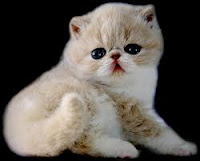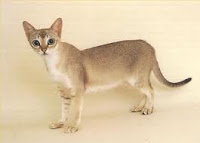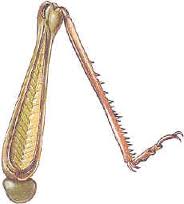Add me first to your site and follow me so that i can add you here. Thanks!
Wednesday, August 31, 2011
Exchange Links
Comment here in this post your links so I can add you up to my link list thanks.
Add me first to your site and follow me so that i can add you here. Thanks!
Add me first to your site and follow me so that i can add you here. Thanks!
Monday, August 29, 2011
Advertise to over 10 million customers around the globe

Promote to over 10 million users across the world.
We promote your business in global network of partners webpages,each with own narrow points of interests.
Our company gives you effective advertising methods that makes your business succeed on the Internet.
We will provide you with real and visible results and take your web-site to the next level.
Advertise to Millions customers Now...

Millions of Customers
Connect your business to millions of shoppers looking for products and services.Our auditory is constantly growing and now it's over 25 million new customers every month.
We send traffic from high-quality local and global promotion webpages, which bring potential
shoppers from North America, Western Europe and upcoming markets.
Get More Traffic, Get More Visitors...

Increase your web-site search engine rank
Be presented on search engines is one of the most critical ways to increase web-sitetraffic and display your business or service to customers who might be looking for what you are offering.
All major search engines use an algorithm to determine your web-site ranks.
They know the number of websites are linking to your web-site; more referrers and hits
better rank for your website.
Get Higher Rank...
We are Cats!
Different cats look, act and meow in different ways depending on their breed.
American Curl. The American Curl is so named because its ears curl backwards.
Turkish Angora. The Turkish Angora has long, silky fur. Tufts of fur grow between its toes and on the tips of its ears.
Himalayan. The Himalayan has long hair that is light-colored with dark markings around the face, feet and tail.
Norwegian Forest Cat. The Norwegian forest cat’s long, soft top coat covers a thick undercoat of hair that keeps water out.
Persian. Persians have long, plush coat in a broad range of colors. Blue, black and white are the most common colors.
Balinese. The Balinese has bright blue eyes and long, silky fur.
Ozone Layer
What are chlorofluorocarbons?
Most of us don’t think about how are everyday activities might influence the global environment. An example is our used of Chlorofluorocarbons or CFCs. These compounds are useful as refrigerants, solvents and aerosol propellants. In the upper atmosphere there is a layer containing a small amount of ozone.
What is the ozone layer?
The ozone layer is important to living things because it blocks harmful ultraviolet rays from reaching the surface.
How CFCs affect the ozone layer?
Scientists discover that CFCs, even in very small amounts cause ozone to break down. When release into the air, these chemicals disperse throughout the atmosphere. When CFCs reach the upper atmosphere and are exposed to ultraviolet light they release a highly reactive chlorine gas.
Ultraviolet light releases chlorine and acts as a catalyst. The chlorine monoxide acts as a catalyst that it breaks down ozone molecules that it isn’t change itself. A single molecule of chlorine can destroy thousands of ozone molecules.
Ozone depletion harms life. A severe depletion of the ozone layer would result in an increase in cases of skin cancer, eye cataracts and suppression of the immune system in humans and other species. Food crops sensitive to ultraviolet rays could also be affected and could cause their death. In 1984, a hole on the ozone layer was discovered over Antarctica. More recently, a similar hole has been discovered in some part of North America and in Arctic were it extent. We can protect the ozone layer by being careful about what chemicals we release into the air.
Jewel quest
Ruby. Some rubies show a star-shaped pattern when a light is shone on them. The ruby is the birthstone for the month of July.
Peridot. The peridot is the birthstone for the month of August.
Emerald. The bright-green emerald is the birthstone for the month of May.
Diamond. Diamonds are one of the most valuable gems, and are also the hardest minerals in the world. The diamond is the birthstone for the month of April.
Amethyst. The purple amethyst is the birthstone for the month of February.
Turquoise. Turquoise can be shades of blue or green. The turquoise is the birthstone for the month of December.
Sapphire. Sapphires are usually blue in color. The sapphire is the birthstone for the month of September.
Opal. Fine opals have many different bright colors in them. The opal is the birthstone for the month of October.
Garnet. Garnets come in many different colors and are used both for jewelry and to make sandpaper. The garnet is the birthstone for the month of January.
Aquamarine. The word Aquamarine means “seawater” in Latin. The aquamarine is the birthstone for the month of March.
Topaz. Topaz can be many different colors. The topaz is the birthstone for the month of November.
Pearl. Pearls come from oysters and other mollusks. The pearl is the birthstone for the month of June.
Insect Structure
Hindwings. These wings are transparent membranes and are covered by the forewings when not in use. Some insects can fly at a speed up to 72.4 km/h (up to 45 mph). Flying is achieved through the rapid beating of these wings – as many as 62, 760 times a minute for the midge called Forcipomyia, t tiny member of the fly family. Rapidly beating wings make the buzzing noise characteristics of many insects.
Forewings. Attached to the thorax, these wings are tough and leathery and help protect the insect. They are not usually used for flying and are held out of the way during flight. The characteristic spots on ladybird beetles are located on these wings.
Head. An insect’s head is found at the front of the body. The head contains the brain and sense organs. Nerves extend throughout the body and can direct many activities independent of the brain. A headless cockroach, for example, can live for a week before it starves to death.
Legs. An insect’s three pairs of legs are attached to the thorax. Depending on the species of insect, the legs are used for walking, running and jumping – sometimes very successfully. A 12 mm (0.47 in) long click beetle can jump 300 mm (11.8 in); a cockroach can run 30 cm (11.8 in) a second. The sticky pads and claws on the ends of their feet enable flies to walk upside down on ceilings. Insect legs also have other functions. Crickets have sound organs akin to ears on their front knees; grasshoppers rub their legs their legs together to produce their song.
Abdomen. An insect’s abdomen lies behind the head and the thorax. No legs are attached to the abdomen. The abdomen contains the digestive and reproductive organs. Insects do not have lungs. Instead, they breathe through tiny openings in the abdomen called spiracles. In females, the abdomen contains the egg-laying organ, the ovipositor.
Eyes. Insects have two types of eyes – compound and simple. The two compound eyes detect swiftly moving objects. Each compound eyes may be made up as many as 30,000 separate lenses that produce a mosaic effect. The simple eyes are used for seeing nearby objects and changes in light intensity. Each simple eye has a single lens overlying a series of light-sensitive nerve elements.
Antennae. The antennae are located on the top of the insect’s head. The antennae are used to detect air movements, vibrations and smells. A dung beetle’s sense of smell is so highly developed that the beetle will begin to move towards buffalo dung even before it hits the ground.
Subscribe to:
Posts (Atom)



















































